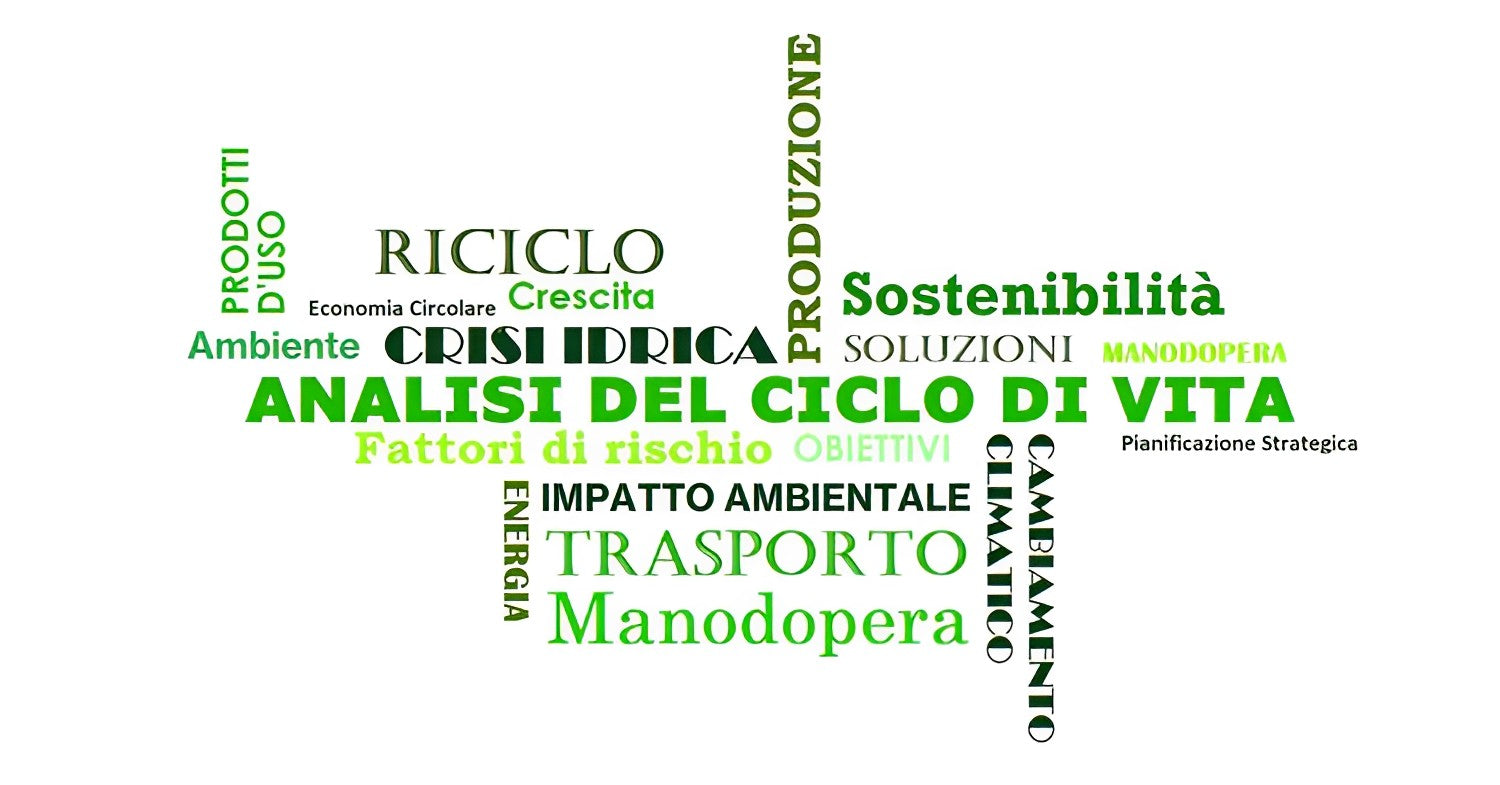Life cycle analysis is an internationally recognized methodological tool through which the impact that a product or service has on the environment and human health is assessed throughout its life, from production to end.
It is regulated according to the International Organization for Standardization (ISO) standards 14040:2006 and 14044:2006 which define its principles and framework, requirements and guidelines.
Life Cycle Analysis is an objective method, used in circular economy systems, which allows to quantify the resources and energy used during all the phases of production of the analyzed product, taking into account the many processes used during the macro-phases of production (cost of raw materials and consequent processing, energy use for production, labor), distribution and transportation, use (social and economic aspect) and maintenance, disposal and recycling.
The aim of the life cycle analysis of a product is to collect the information necessary to adopt useful solutions to reduce as much as possible the environmental impact generated by the life of the product, developing and improving the processes carried out according to a strategic planning based on environmental marketing, ecodesign and circular economy.

The four phases of the method
The life cycle analysis follows four main phases which are in turn complexly organised:
- Define the goal and scope
The first phase is necessary to frame the actual analysis. We start by establishing the objective and purpose for which it is carried out, the context and the type of audience it is intended for.
Three other important factors of the analysis are also established, namely: the functional unit of the product, which serves as a qualitative and quantitative reference for all the data collected; the boundaries of the system , i.e. the life cycle processes of the product that are taken into consideration; and the impact categories , chosen on the basis of the effects that the analysed system determines on the environment (examples include climate change, land use, eutrophication ).
- Analyze inventory
This is the most complicated and lengthy phase. It involves the collection of all the data needed to calculate the inputs and outputs of the previously identified system, relating to resources and emissions, which form the life cycle inventory .
- Evaluate the impact
This is the phase in which the data collected in the inventory is processed, converting them into information relating to the impacts that the life cycle of the analyzed product has concretely on the environment and human health. This occurs through some sub-phases called Classification of data based on the type of impact they determine; Characterization of individual inputs and outputs based on the type of impact they determine; Normalization of the impacts determined according to a single reference value such that it is possible to carry out a comparison.
- Interpret
In the last phase, the results obtained in the second and third phases are finally correlated in order to obtain the identification of the critical points of the analysis and any changes necessary to the modeling of the same to obtain better results; and the evaluation of the comparative data such as to produce technical and solid conclusions applicable for the purposes and objectives established in the first phase, in a circular economy and product improvement perspective.

Final considerations and advantages
Life cycle analysis is technically very effective. Given its complex structure, its use tends to have high costs, which are reduced if we look at the advantages it produces, including: improved use of resources and investments during the life cycle of the product or service analyzed; greater transparency of the production chain; the flexibility of the analysis itself, which can be carried out according to different approaches; and finally, and most importantly, the provision of concrete strategic planning that makes it possible to reduce the various environmental impacts considered.
In conclusion, it is impossible not to notice how this is a tool as useful as it is necessary within a society that is increasingly sensitive to the values of support and care for the environment, it lends itself as a close ally of the circular economy that is increasingly taking up space in the production systems of consumer goods that look to sustainability.






Leave a comment